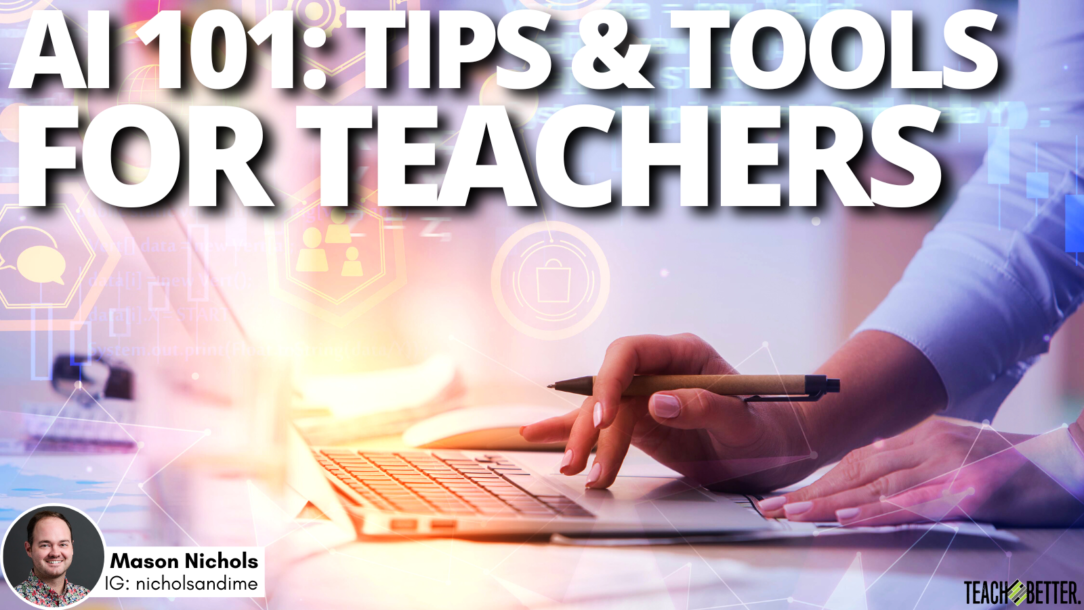TL;DR:
- This post explores the integration of artificial intelligence (AI) in education.
- AI tools that can be used in education include MagicSchool, Diffit, Eduaide, SchoolAI, and Brisk Teaching.
- Some features of AI that can be used in education are email assistance, curated educational content, gamification, AI “assistants,” and reading level adjustments.
AI in Education
Over the past year, we have witnessed the rise of artificial intelligence (AI). While this topic can seem intimidating to understand, it has trickled into educational resources. Educators might be scared by this but we know knowledge is power. When graphing calculators were first introduced to classrooms, I am sure teachers struggled with how to teach the material. However, we learn, adapt, and find ways to still challenge our students using readily available resources.
This post will introduce you to a variety of websites and resources that utilize artificial intelligence, as well as some of their features. Some resources will help teachers with daily tasks or ways to “save time.” Maybe you’re new to using AI. By no means am I an expert. However, I will continue to learn about how these tools impact our students and how to use them safely because artificial intelligence isn’t going to disappear.
For an additional layer of security, make sure you understand your district’s technology policies. Ensure that all resources are vetted before use. It is also my belief that AI cannot simply replace a teacher. Human oversight is crucial to ensure bias is removed and teachers adapt and tailor AI tools to fit their students’ needs. Nonetheless, it can help teachers with a variety of tasks and help our students in a variety of ways.
Please note, many of the tools listed below are helpful if you are new to artificial intelligence in education. The tools listed have a short description and do not show the full range of features and uses they offer. Know that I am not compensated for mentioning these resources. After completing some of the training to further my education and familiarity with the program, I have become an ambassador to some of the tools mentioned.
Artificial intelligence continues to grow and evolve rapidly. I hope that you will take away something helpful from this post and find it useful for your classroom. I also hope you can view AI in a positive, less fearful light. Click To Tweet
5 Easy-To-Use AI tools
MagicSchool
If you’re on social media, you’ve probably seen MagicSchool. You will find tools to assist with emails, lesson plans, SEL, and more in a convenient layout organized by category. MagicSchool often updates the platform with new features and has helpful training videos if you’re new to the platform. After completing the modules you can earn badges and connect with other teachers about how they utilize the platform. I thoroughly enjoy being part of their community with so many educators sharing how they utilize the platform and sharing success stories.
Diffit
Diffit allows users to search for a topic and grade level while curating questions, images, adapted reading passages, vocabulary, and more. From there you can select a student activity and choose from their countless graphic organizers that convert into Google Docs, Slides, and Forms. My favorite aspect of Diffit is how it curates these countless graphic organizers. If users are curious about where the information is coming from you can easily view the sources used to curate the material. It is incredibly user-friendly and offers differentiating tools to help students who may need extra support or more challenging vocabulary.
Eduaide
Eduaide offers countless tools to build assessments, lessons, feedback tools, cooperative learning, and more. Simply select what category and input the standard and grade level you want and it will generate. My favorite feature with Eduaide is the gamification tab. I can input the standard and it generates a Jeopardy, escape room, Bingo, Battleship, and more. Any teacher knows creating games on your own can be time-consuming and this feature helps save time and curate quality questions.
SchoolAI
ScholAi is large platform with so many built-in tools to assist educators. From tools to creating newsletters, quizzes, rubrics, lesson plans, and more you can easily spend a lot of time digging into all of the platform features. With SchoolAI, you can utilize AI “assistants” that can generate ideas and assist teachers in brainstorming. We have all had those days teaching where you have no idea where to begin or how to introduce an engaging lesson. Simply click on the assistant tab and select which “assistant” you want. Type your question and watch it generate. As well as providing ideas for lessons, it can be an excellent tool for learning how to use artificial intelligence.
Brisk Teaching
Brisk Teaching is a Chrome extension that lets users change the reading level of websites and articles, create assessments and lesson plans, and more. The platform allows teachers to easily differentiate and adjust reading levels and create a variety of resources in their library. My favorite Brisk tool is their decodable text generator. This lets me specify the type of decodable text to be generated and converts it into a Google Doc.
Artificial intelligence continues to grow and evolve rapidly. I hope that you will take away something helpful from this post and find it useful for your classroom. I also hope you can view AI in a positive, less fearful light. The use of AI will continue to affect how we teach and learning strategies and resources to utilize is the first step to understanding.
As we navigate the expanding landscape of artificial intelligence we must strive to embrace potential benefits while remaining vigilant about ethical considerations and ensuring human vetting when using. As teachers stay informed and adapt to new technology, we can enrich learning, empower students, and support education for the present and future.
About Mason Nichols
Mason Nichols is a reading interventionist in Texas. As an advocate for social-emotional learning, he uses diverse literature and teaches strategies to help students build empathy and self-awareness. He believes that a classroom should be an inclusive environment that allows students to be challenged and supported. He enjoys using a variety of technology tools to empower students and allow them to think creatively and outside the box. In addition to campus professional development, he has presented at ISTE and TCEA several times. Mason is currently earning his Master’s degree in Learning Experience Design and Education Technology.




